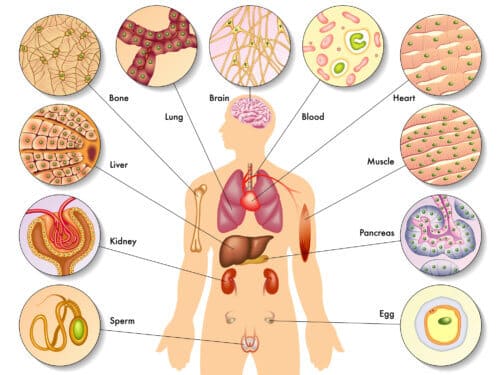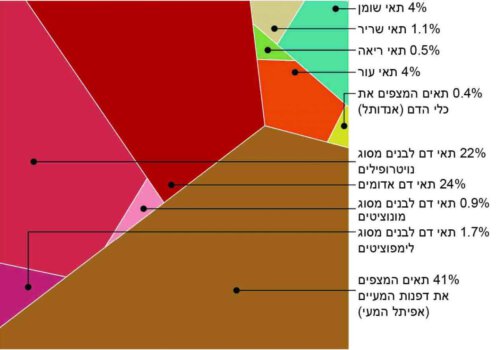Weizmann Institute of Science scientists have mapped the rate of regeneration of our body * Every year and a half we produce 50 kilograms of cells, as the average weight of the cells in our body

Does the ship of Theseus remain the same ship even after all the planks and sails have been replaced? At what point, if at all, did she cease to be the ship of Athens' legendary founder? As in the ancient philosophical paradox, the cells of our body are also constantly changing, and only a few of the "planks" we came into the world with remain intact in our adulthood. Weizmann Institute of Science scientists We examined the turnover of cells in the body in an overview and mapped the rate of their regeneration. Their findings indicate that every three months our body produces about 30 trillion new cells - a number equal to the total number of cells in the body - and every year and a half we produce 50 kilograms of cells, as the average weight of the cells in our body; This is in contrast to a previous opinion according to which it is a longer period of time of about seven years.
The research group of Prof. Ron Milo from the Department of Plant and Environmental Sciences tries to understand the world in numbers. In a series of studies from recent years, the group developed methods for creating "biological censuses". In the current study, led by research student Ron Sander, the researchers applied these tools to statistical data about the prevalence, mass and life cycle of cells in the body. According to the research, every day, about 300 billion cells die and are born in our body (about 4 million cells every second). At one end of the turnover rate are the cells - the red blood cells and the cells lining the intestinal walls - and at the other end are the brain and heart cells, some of which do not regenerate at all.
The researchers also checked the turnover rate of the intestinal bacteria which make up several hundred grams of our body weight and excel at an extremely high turnover rate of at least 100 grams per day
As part of the study, the scientists created maps of the daily turnover of cells in the body according to both the number of cells and their mass. The analysis of the daily turnover according to the number of cells shows that the white and red blood cells - whose lifespan is between one day and several months - are responsible for about 90% of the cell turnover in the body. Although they are relatively light cells, the blood cells have the upper hand even when looking at the distribution of the daily turnover by mass, with a share of about 50% (about 40-50 grams per day). The epithelial cells of the intestinal walls, which are much larger than the blood cells and are replaced, on average, every few days, stand after them in the turnover map with a share of 12% in the distribution by number of cells and about 40% in the distribution by mass. The fat and skin cells trail behind with about 4% of the daily turnover by mass, the muscle cells occupy a share of about 1%, and the lung cells - only 0.5%.

The researchers did not forget to check the turnover rate of the intestinal bacteria, which make up several hundred grams of our body weight and excel at an extremely high turnover rate of at least 100 grams per day.
"Beyond the philosophical question of the 'Ship of Theseus', the turnover maps we created will allow us to study how the relationships between different types of cells change over the years, and will also allow us to examine how the balance between new cells and dead cells is disturbed in cancer and many other diseases," explains Prof. Ron Milo. "In the future, we may also be able to develop diagnostic tests to detect abnormal levels of turnover in certain types of cells and thus identify early signs of the development of diseases."
More of the topic in Hayadan:
- Mend a broken heart: Scientists have discovered a unique molecule that may heal damaged heart tissue
- restless old men
- Researchers from the Hebrew University discovered the mechanism responsible for creating insulin-producing cells in the pancreas
- A new cyber attack could cause scientists to produce a virus without their knowledge
- Researchers offer a new approach to dealing with the corona virus: putting the immune system into action even before the body is attacked
